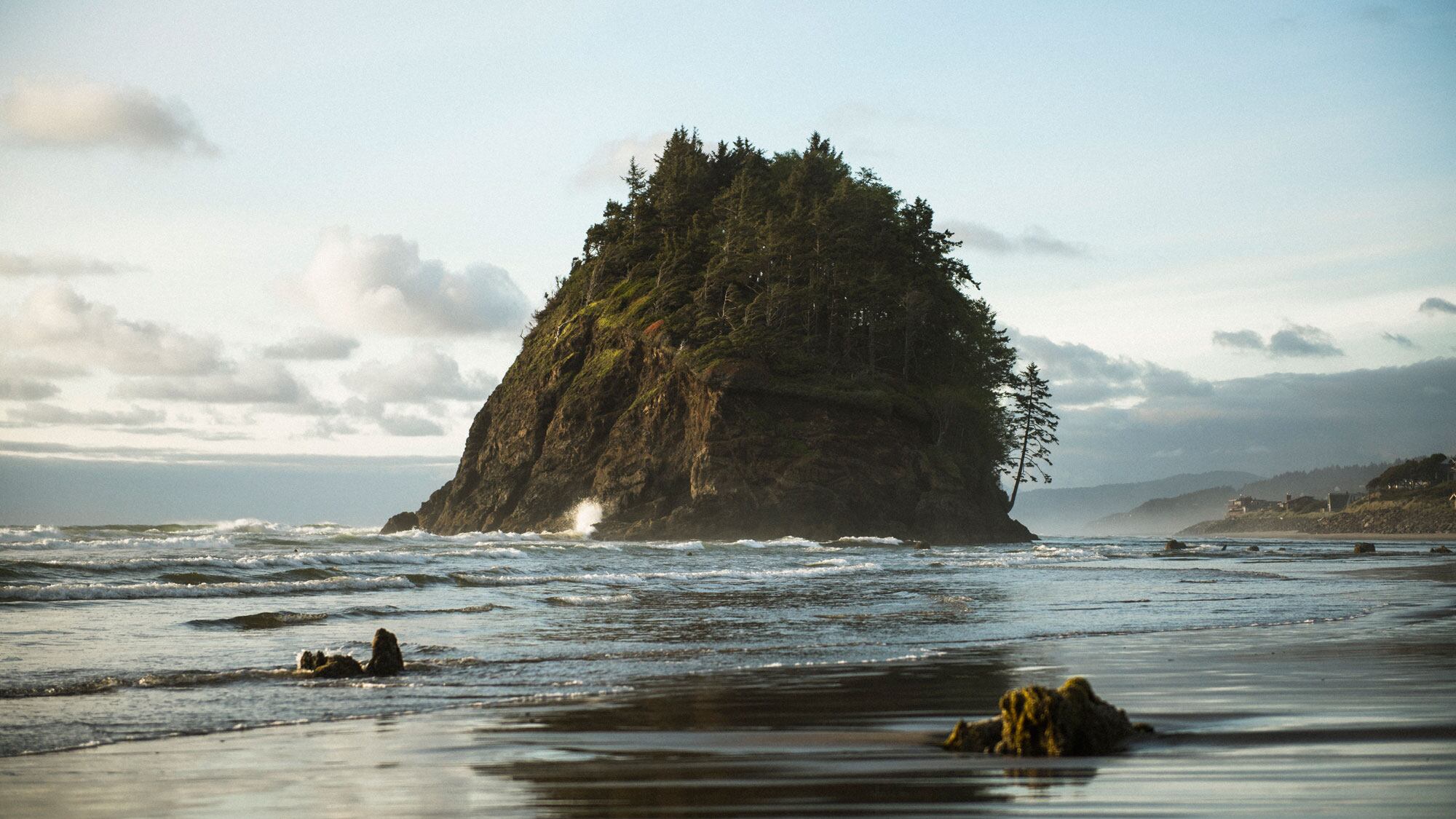The eruption of an underwater volcano near the Pacific nation of Tonga on Friday night sent tsunami waves toward the Oregon Coast. But most beaches in Oregon saw maximum wave heights of less than a foot—more curiosity than danger.
The volcano, called Hunga Tonga-Hunga Ha’apai, erupted around 8:30 pm on Jan. 15, launching plumes of gas thousands of feet high and sending shock waves recorded as far away as Mount Hood. It also sent walls of water pulsing toward the Pacific Coast.
Emergency officials warned Oregonians to stay clear of beaches. So far, the arriving tsunami waves have been modest. “The largest waves have spared much of the Oregon Coast so far,” the Portland office of the National Weather Service reported shortly before noon. The tallest wave recorded in Oregon so far today was 1.5 feet along Port Orford, at the southern end of the state.
Officials caution that larger waves could still arrive without warning.
Still, it’s the first significant tsunami event in Oregon since 2011, when waves from a catastrophic earthquake in Japan caused extensive property destruction and killed four people here. The Oregon Office of Emergency Management says 21 tsunamis have hit the Oregon Coast since 1854.
Firsthand accounts told to WW describe tsunami sirens sounding in Cannon Beach shortly after 9 am Saturday. But little happened after that, other than a heavy surf that one witness described as “some extra frothiness.”
The most impressive sight so far? A wave traveling up Kiwanda Creek in the coastal town of Neskowin.
Neskowin, Oregon this morning! #tsunamitonga #TSUNAMI pic.twitter.com/YQJjaFL5w1
— retelling•the•recipe (@tiggirltk) January 15, 2022
